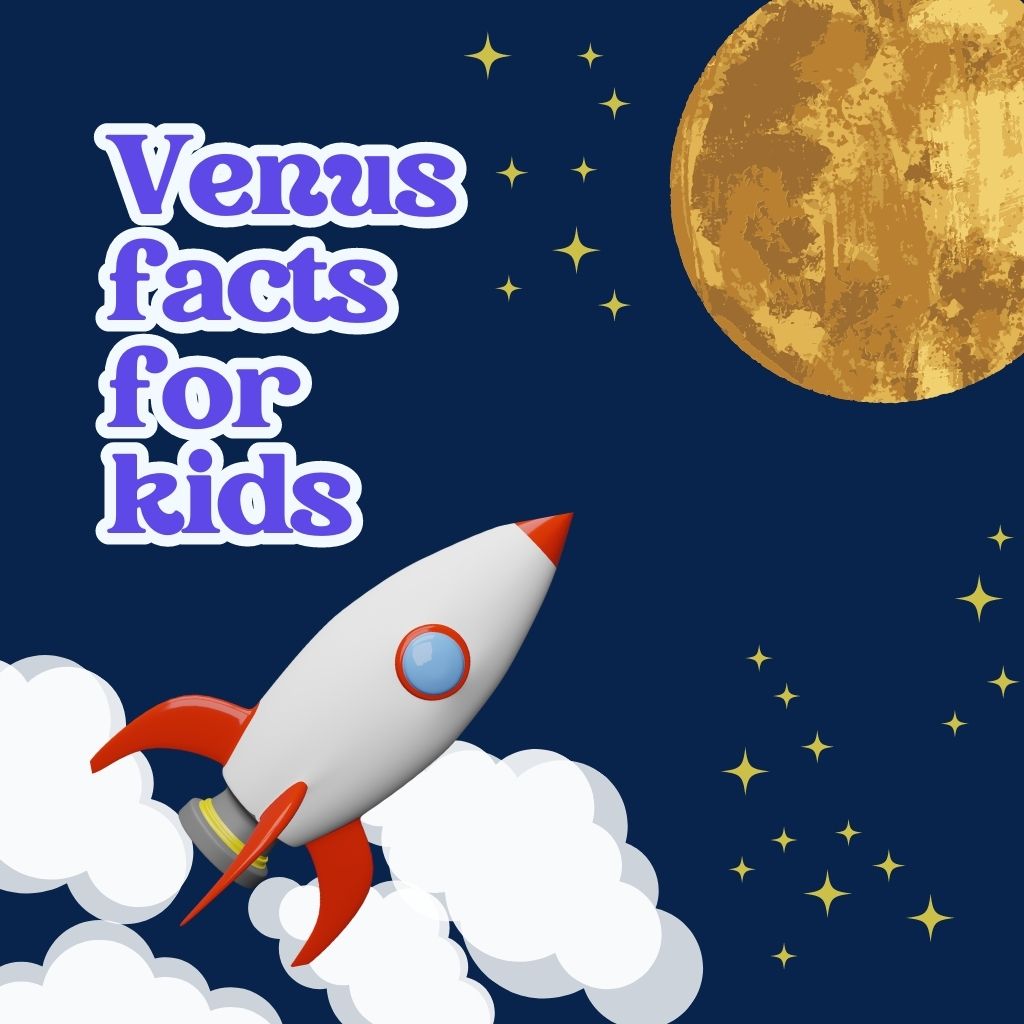This site contains affiliate links to products. I may receive a commission for purchases made through these links.
As the second planet from the Sun and our closest planetary neighbor, Venus shares some similarities with Earth, such as its similar size and rocky composition.
However, despite these resemblances, Venus possesses a unique set of characteristics that make it an intriguing and enigmatic celestial body.
In this article, we will uncover intriguing facts about Venus, providing you with an exciting journey through its unique characteristics, surface conditions, and role in our solar system.
1. Venus is the second closest planet to the Sun
Venus holds the distinction of being the second planet closest to the Sun in our Solar System. While Mercury is the closest, Venus follows closely behind in this cosmic lineup.
Its proximity to the Sun means that Venus receives a tremendous amount of solar energy.
2. Venus is the only planet in our Solar System with a clockwise rotation
In a peculiar twist, Venus is the only planet in our Solar System that rotates in a clockwise direction. Most other planets, including Earth, rotate counterclockwise on their axes. This unique characteristic sets Venus apart from its planetary neighbors and adds to its intriguing nature.
The backward rotation of the planet means that on Venus, the sun rises in the West and sets in the East, opposite to Earth’s pattern.
Scientists believe that Venus’s unusual rotational pattern may be the result of a significant event in its history, such as a collision with another celestial body, which altered its rotational dynamics.
3. A day on Venus lasts for 243 Earth days
If you thought a day lasted 24 hours on every planet, Venus would surprise you. On Venus, a single day, defined as the time it takes for the planet to complete one rotation on its axis, lasts a staggering 243 Earth days.
This means that a day on Venus is longer than its entire year! The prolonged rotation of Venus makes it the slowest-rotating planet in our Solar System.
So, if you were to stand on the surface of Venus, you would experience an incredibly long day, with daytime and nighttime spanning several Earth months. The reasons behind Venus’s extremely slow rotation remain a topic of scientific study and fascination.
4. Venus has a thick and toxic atmosphere
Venus is enveloped by a thick atmosphere composed mainly of carbon dioxide. This atmosphere creates a greenhouse effect, trapping heat and making Venus the hottest planet in our Solar System.
The atmosphere is filled with clouds made of sulfuric acid, which gives Venus its characteristic yellowish appearance. These acidic clouds make Venus’s atmosphere highly corrosive, meaning it is inhospitable for human exploration.
5. Venus is the second brightest celestial object in the night sky

Venus is the second brightest natural object visible in the night sky, right after the Moon. When you gaze up at the stars on a clear night, you might notice a dazzling point of light shining with exceptional brightness. That’s Venus! Its proximity to Earth and its highly reflective atmosphere contributes to its brilliance.
As the sun rises, Venus emerges as the brightest object after the Moon, captivating our gaze. So, keep an eye out for this radiant planet in the night sky, as it adds its sparkling glow to the celestial tapestry above us.
6. Venus is often referred to as the “Evening Star” or the “Morning Star”
Due to its brightness and visibility in the night sky, the planet Venus has earned the nicknames “Evening Star” and “Morning Star.” Depending on its position relative to Earth, Venus can be seen shortly after sunset, appearing as a brilliant object in the western sky.
Hence the “Evening Star” nickname. Similarly, when Venus is visible before sunrise, it is referred to as the “Morning Star.” This celestial phenomenon has captivated stargazers and inspired legends and stories throughout history.
7. Venus is the hottest planet in the Solar System
It’s like a cosmic oven! The temperatures on Venus can get super, super hot, reaching up to a scorching 900 degrees Fahrenheit (475 degrees Celsius).
That’s even hotter than Mercury, the closest planet to the Sun. Venus gets so hot because of its thick atmosphere that traps heat from the Sun, just like a blanket.
This makes Venus a very toasty place, and it’s not a planet you’d want to visit without a spacesuit! So, if you ever wondered which planet is the hottest, remember it’s our neighbor Venus, the sizzling hot planet of our Solar System!”
8. Venus is Earth’s sister planet
Venus, often referred to as Earth’s sister planet, shares many similarities with our blue planet. Just like Earth, Venus is a terrestrial planet, meaning it has a solid surface. It is similar in size to Earth, with a diameter only slightly smaller.
Furthermore, Venus and Earth are both rocky planets composed of similar materials, such as silicate rocks and metals.
However, despite these similarities, Venus has a drastically different environment. Its thick atmosphere consists mainly of carbon dioxide, creating a runaway greenhouse effect and leading to scorching temperatures and extreme atmospheric pressure.
So, while Venus may be Earth’s sister in terms of size and composition, its inhospitable conditions make it a completely different world altogether.
9. Venus is named after a Roman Goddess
Venus takes its name from the Roman goddess of love and beauty. In Roman mythology, Venus was revered as a deity associated with love, fertility, and prosperity.
This celestial body’s name reflects the planet’s mesmerizing appearance and its radiant presence in the night sky.
10. Venus was first observed through a telescope in 1610
The year 1610 marked a significant milestone in the exploration of Venus when it was first observed through a telescope. This breakthrough occurred during the early days of telescopic observations made by renowned astronomer Galileo Galilei.
With the help of a telescope, Galileo discovered that Venus went through phases just like our Moon, shifting from crescent to gibbous and full phases. This groundbreaking observation revolutionized our understanding of Venus and confirmed that it orbited the Sun, not the Earth.
Kids who are curious about Venus can also get a closer look at this fascinating planet through a telescope.
The Celestron AstroMaster 70AZ is an excellent telescope choice for young aspiring astronomers.
The telescope features a 70mm aperture, which allows for clear and detailed views of celestial objects, including the Moon, planets like Venus, and even some brighter deep-sky objects.
Its altazimuth mount makes it easy for children to navigate and track objects, ensuring an enjoyable observing experience.
Another good option is the Celestron Inspire 100AZ refractor telescope is a fantastic choice for kids who are eager to explore the night sky.
The telescope comes with a sturdy altazimuth mount, which allows for smooth and precise movements as kids navigate the heavens.
The Inspire 100AZ also includes a built-in smartphone adapter, enabling kids to capture photos and videos of their celestial discoveries.
You may also like: Best Telescopes for Kids in 2023 (Read Before Purchase)
11. Venus is a small and rocky planet
Did you know that Venus is a terrestrial planet, just like Earth? It’s true! Venus is a small and rocky planet, similar in nature to our blue planet.
This means that, like Earth, Venus has a solid surface made up of rocks and minerals. However, despite their similarities, Venus and Earth have vastly different environments. While Earth is teeming with life and a breathable atmosphere, Venus has a thick, toxic atmosphere composed mainly of carbon dioxide.
Takeaway: Learn about interesting Venus facts for kids
Venus has captivated astronomers and continues to inspire curiosity. Young readers can appreciate the beauty of this enigmatic planet and gain a deeper appreciation for the vastness and diversity of our Solar System.
Exploring the captivating world of Venus has allowed us to uncover a treasure trove of fascinating facts.
From its proximity to the Sun and its unique clockwise rotation to its scorching temperatures and thick atmosphere, Venus presents a distinctive celestial marvel.
We’ve learned that Venus shares similarities with Earth as a terrestrial planet, yet its inhospitable conditions make it a truly extraordinary and enigmatic world.
As we continue to delve into the mysteries of the universe, let Venus serve as a reminder of the vast diversity and marvels that await us beyond our planet Earth.
You may also like:






